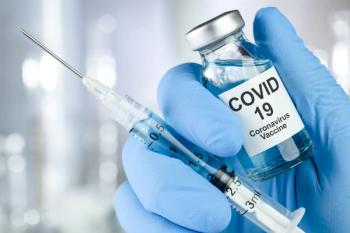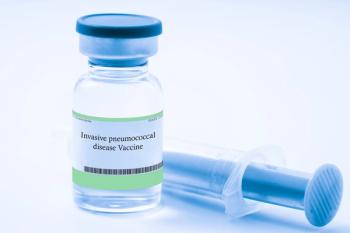
Do Albuterol Inhalers Increase the Risk of Cardiovascular Disease?
Key Takeaways
- Albuterol's cardiovascular risks necessitate reassessment of prescribing practices, especially for high-risk patients, due to increased adverse events like tachycardia and arrhythmias.
- Intravenous albuterol administration poses higher cardiovascular risks compared to inhaled forms, with significant adverse event rates, including electrolyte disturbances like hypokalemia.
A recent review highlights cardiovascular risks linked to albuterol use in asthma treatment, urging safer alternatives and enhanced patient monitoring strategies.
Albuterol (salbutamol), the widely recognized short-acting β2-agonist (SABA), remains a cornerstone for providing rapid symptomatic relief during acute asthma exacerbations globally. However, a comprehensive review synthesizing clinical data from the last decade (2015 to 2025) highlights mounting concerns regarding its cardiovascular safety, prompting a critical reassessment of prescribing and monitoring practices, particularly for high-risk patients.1
The robust evidence indicating significant cardiovascular risks associated with albuterol usage, clinicians must adopt comprehensive and proactive cardiovascular risk management protocols prior to initiating therapy, especially in chronic or high-dose scenarios,” the study authors said.1
While albuterol is highly effective due to its rapid bronchodilatory effect from potent relaxation of bronchial smooth muscles, this therapeutic mechanism is inextricably linked to unintended cardiac effects through the stimulation of β2 receptors in cardiovascular tissues. Therapy must now balance the efficacy of the drug against these documented risks.1
The Spectrum of Cardiovascular Harm
The review reveals that cardiovascular adverse events (AEs), previously considered mild, have been documented with increasing frequency and severity. Reported cardiovascular AEs encompass a broad spectrum, including tachycardia, palpitation, QT interval prolongation, arrhythmias—such as supraventricular tachycardia and ventricular arrhythmias—hypotension, and myocardial ischemia.1
Tachycardia stands out as one of the most consistently reported AEs, according to the authors. Data indicates that approximately 16% of patients receiving standard-dose inhaled albuterol experience tachycardia, a figure that escalates significantly to nearly 51% in individuals receiving intravenous administration or higher-than-standard dosing. Notably, intravenous administration has been associated with markedly higher rates of AEs overall, though inhaled formulations still carry a moderate risk.1
Further complicating patient safety is the frequent induction of electrolyte disturbances, specifically hypokalemia, which occurs when β2 receptor stimulation drives potassium intracellularly. This hypokalemia profoundly heightens the risk of cardiac arrhythmias, including QT prolongation and potentially lethal torsades de pointes, defined as ventricular tachycardia, or a fast heart rhythm that begins in your heart ventricles. Indeed, studies involving children in the pediatric intensive care unit who received continuous nebulization showed hypokalemia rates of 15.2%. Continuous nebulization therapy, often utilized for severe exacerbations, was also correlated with hypotension in 90% of pediatric patients in 1 study, the authors found.1
These concerns are most pronounced in vulnerable populations, including elderly patients who often possess diminished cardiac reserve, pediatric patients with immature cardiovascular systems, and individuals with pre-existing cardiovascular diseases such as heart failure, hypertension, and ischemic heart disease.1
Managing Dose and Delivery
Given that albuterol is intended for acute symptom relief and not frequent use, the severity of AEs often depends on the dosage taken. Pharmacists should be aware that frequent dosing—defined as using albuterol 3 or more days a week or depleting an entire inhaler canister within a month—indicates poorly controlled asthma, necessitating a conversation with the patient’s health care team to reassess the overall treatment plan.2
For patients who struggle to tolerate AEs, the method of drug delivery should be considered. AEs are less likely when using a metered dose inhaler (MDI) compared with taking the medication as a pill or liquid. Using a spacer or chamber device attached to an MDI can also help reduce symptoms. Furthermore, reducing the inhalation dose—for example, switching from 2 puffs to 1 puff—may still provide adequate symptom relief while minimizing AEs for some individuals.2
Is Levalbuterol a Safe Alternative?
In light of established cardiovascular risks, current clinical guidelines are increasingly advocating for the consideration of safer alternatives like levalbuterol, particularly in high-risk patient cohorts. Levalbuterol is the pure R-isomer of racemic albuterol, lacking the S-isomer component that has been associated with mechanisms leading to bronchoconstriction and potential detrimental effects.1,3
Multiple studies suggest that levalbuterol, due to its selective isomeric structure, exhibits a substantially reduced incidence of cardiovascular AEs, including fewer episodes of tachycardia and lower rates of significant QT interval prolongation compared to the racemic mixture. While comparative data shows no clear advantage in critically ill adult patients when comparing the 2 agents, pediatric studies suggest that levalbuterol may be beneficial by trending toward reduced heart rate increases.1,3
“Given the documented safer cardiovascular profile of levalbuterol, consideration of this alternative medication should be strongly advocated, particularly in high-risk patient groups identified through risk stratification,” the authors said.1
Despite its promising safety profile, the widespread adoption of levalbuterol is tempered by its higher acquisition costs and limited availability in certain regions. Therefore, health care policymakers and clinicians are urged to evaluate the cost-effectiveness of this alternative, balancing economic factors with crucial patient safety outcomes, according to the authors of the current study.1
The Pharmacist’s Role in Personalized Asthma Care
The evidence from the past decade strongly supports the necessity for personalized dosing and enhanced monitoring. Pharmacists, as vital points of contact, must emphasize the importance of comprehensive cardiovascular risk management protocols prior to initiating or continuing high-dose or chronic therapy.1
This includes routine assessment and correction of serum potassium levels, as electrolyte imbalances are common and directly linked to heightened arrhythmia risk. Regular electrocardiographic monitoring is strongly recommended for patients undergoing prolonged albuterol therapy, those with existing cardiac comorbidities, or patients receiving concurrent medications that might prolong the QT interval.1
Ultimately, understanding the complex mechanisms underlying albuterol’s cardiovascular effects is crucial. Continuous education and integration of pharmacovigilance data—which consistently reports heightened cardiovascular risk signals associated with higher-dose or chronic therapy—are essential for ensuring optimal therapeutic efficacy while prioritizing patient safety in asthma care. Adopting a minimal effective dose strategy, as advocated by current guidelines, should be the standard approach to mitigate unnecessary cardiovascular exposure.1
“Future investigations must prioritize large-scale, randomized controlled clinical trials explicitly designed to evaluate the cardiovascular safety profile associated with short-acting beta-agonists, particularly albuterol,” the study authors said.1
READ MORE:
Are you ready to elevate your pharmacy practice? Sign up today for our
REFERENCES
1. Abbas GH, Ahmed F, Iqbal R, et al. A 10-year interval of cardiovascular effects of albuterol in asthma management: Graphical review. Curr Res Pharmacol Drug Discov. 2025;9:100236. Published 2025 Oct 22. doi:10.1016/j.crphar.2025.100236
2. Mayo Clinic. Albuterol side effects: Can I avoid them?. October 22, 2025. Accessed November 17, 2025. https://www.mayoclinic.org/diseases-conditions/asthma-attack/expert-answers/albuterol-side-effects/faq-20058088
3. Lindquist DE, Cooper AA. Safety of Levalbuterol Compared to Albuterol in Patients With a Tachyarrhythmia. J Pharm Technol. 2014;30(1):13-17. doi:10.1177/8755122513507700
Newsletter
Pharmacy practice is always changing. Stay ahead of the curve with the Drug Topics newsletter and get the latest drug information, industry trends, and patient care tips.













































































































































